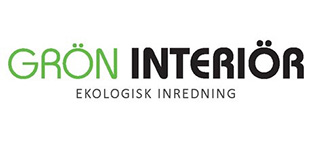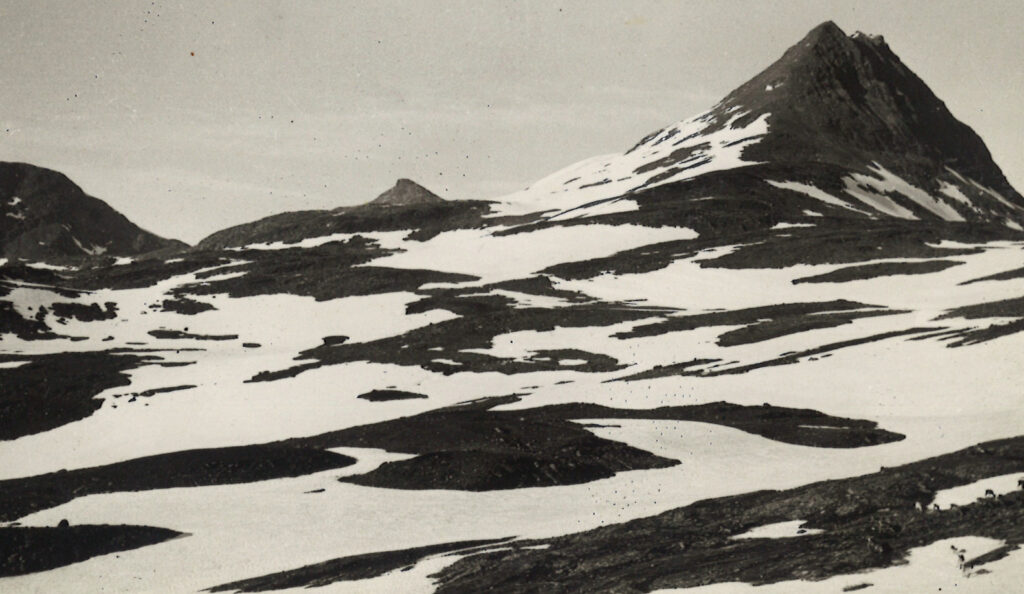
The summer days stretch on through the light nights while the winter days are contrastingly dark in the little Norwegian mining village of Sulitjelma where Signe Lund was born.
Signes father Kjell Lund came from Horten on the Oslofjord. He was born into a family of 9 children. His father was a teacher and he himself trained to become an engineer starting work at 17 as a trainee in the copper mining village of Sulitjelma. The village lay by a lake in a secluded valley, far off the beaten track in the shadow of the Sulitelma mountain. It lay 16o east and 67o north of the Arctic Circle. To get there at that time you took Hurtigruten, the coastal ferry, to Bodö and drove by horse and sled or buggy to Sulitjelma or Sulis as it was known to those who lived there.
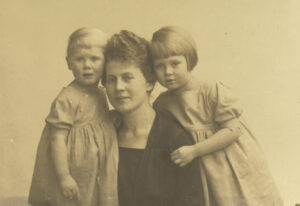 Aagot Anfindsen moved from Bergen with her parents AO and Olava Gurina when her father got a job at the mine. Aagot was the third of 5 Children but her mother died when she was 13 years old. Her father remarried and life was not easy for her growing up in Sulitjelma. Kjell completed his training there while Aagot worked for some years in Berlin as a secretary. She got engaged there to Hans von Bülow but on a return visit to Sulitjelma she fell deeply in love with Kjell and broke off the engagement. Kjell and Aagot had a large family wedding and quickly became a central family in the mining village of Sulitjelma.
Aagot Anfindsen moved from Bergen with her parents AO and Olava Gurina when her father got a job at the mine. Aagot was the third of 5 Children but her mother died when she was 13 years old. Her father remarried and life was not easy for her growing up in Sulitjelma. Kjell completed his training there while Aagot worked for some years in Berlin as a secretary. She got engaged there to Hans von Bülow but on a return visit to Sulitjelma she fell deeply in love with Kjell and broke off the engagement. Kjell and Aagot had a large family wedding and quickly became a central family in the mining village of Sulitjelma.
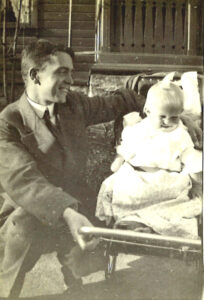
Kjell and Signe
In lieu of her mother Aagot turned to the local women when it came to advice on getting pregnant. They advised her to cook a soup of bread and beer which she drank daily. Whether this actually helped or not Aagot did get pregnant and their first daughter was born 25th September 2015. Kjell and Aagot were over the moon but despite the backing of their close-knit family and friends their daughter cried and cried. Her parents couldn’t understand why. They suspected that something was wrong with Aagot’s breastmilk so they tried cow’s milk. They tried goat’s milk. They tried a homemade pacifier made of fabric dipped in sugar-water. But nothing stopped the crying and the Lunds eventually asked the ‘local’ minister to baptise their daughter because they feared she wouldn’t make it.

Signe 3 years old
When the minister skied in to Sulitjelma they hadn’t decided on a name and wrote some names on pieces of paper, folded them and put them into a hat. They put her little hand into the hat and she grabbed a piece of paper. When her parents unfolded the paper they saw that the name she had chosen was Signe. They didn’t like the name so they put it back into the hat. They repeated the process two more times but after her little hand had grabbed the same name three times she was baptised Signe which means blessing. Signe was to become my mother. Signe refused to drink cow’s milk when she was three years old but it took many more years before she learnt that she was actually allergic to lactose, casein and gluten. the main ingredients in the beer soup that her mother was drinking. No wonder Signe cried. Signes first sister, Anne-Karine, Signe nicknamed Nussa, was born a year later in Sulitjelma and the girls were very close.

Nussa, Aagot, Signe 1919
Because Kjell was fluent in English he was given the task of assisting a visiting engineer in developing a flotation system for the mine that would reduce the toxic substances being deposited into the local lake. This led him to advance quickly and he soon became a manager at the mine and later became director. The mine itself was part of the Swedish mining consortium Sulitjelma Gruber Aktieselskap where Kjell was appointed associate director. In 1920 he transferred to Stockholm taking his growing family with him. Signe was now five and her sister Anne Karine was four. Kjell found a house in a little village called Älvsjö, now a suburb of Stockholm and the home of Swedens largest exhibition site. At the time the little village was connected to Stockholm by a small railway. Now it is part of Stockholms subway system. The house was on the village’s long dirt road with a boardwalk, Langgången, along the side of the road to avoid people walking in the dirt, particularly when it rained.
There were relatively few modern conveniences in those days but the Lunds lived in what could almost be termed luxury. Their house lay in a big garden. They had their own well in the garden where you could draw water with a bucket that lowered down on a chain. With a little jiggle the chain tipped the bucket over, filled with water and could be wound back up and carried into the house. Their kitchen also boasted a wood stove, an oven and an indoor sink with a hand pump to crank up drinking water,
There was an outhouse in the garden known in Swedish as the dass. There were trees all around the dass which formed the drainage system. They also had a primitive dass in the house which was an added luxury at that time in Stockholm where most people only shared an outside dass in the yard. But the dass-cans still had to be emptied and a man would collect the cans with a horse and wagon, replacing them with fresh empty ones. When guests came to stay the man with the wagon didn’t come often enough so the cans had to be emptied by Kjell and one of the girls who helped in the home. They would tie wet towels around their heads to cover their noses and carry a can between them which they tipped over into the drainage system. The family also used the dass in the garden untill the man came with fresh cans. Outside dass are still in use in summerhouses in Norway where there is no plumbing, though less common in Sweden.
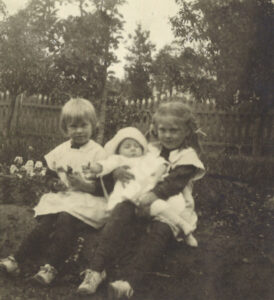 Signes second sister, Inger, was born in Älvsjö. Signe was four years old when the company head office was moved to Gothenburg taking the growing Lund family with them for a few years. They eventually moved back to Stockholm and an apartment on Vallhallavägen in 1926.
Signes second sister, Inger, was born in Älvsjö. Signe was four years old when the company head office was moved to Gothenburg taking the growing Lund family with them for a few years. They eventually moved back to Stockholm and an apartment on Vallhallavägen in 1926.
Vallhallavägen is part of Stockholms center today but was at the time on the outskirts and close to the fields of Djurgården with the sheep literally grazing where the girls played on the other side of the road from where they lived on Valhallavägen.
The little flat on Vallahallavägen was crowded and there was barely space to move between the beds in the girls’ room. Aagot had health problems and needed lots of help at times. Hives and burning skin took her to sanitoriums seeking help and so the Lunds invited young girls from families of friends to help in the home. Some came all the way from Sulitjelma and it was a way for them to get out into the world while meeting the acute needs of the growing family. When it was time for these girls to move on Aagot helped several of them to get training and jobs in Stockholm. Some married there and the Lunds formed friendships with their helpers that were maintained for three generations. These girls shared a bedoom with Signe and her sisters.

Lillan, Signe, Nussa, Inger at Dalarö 1929
Aagot felt at her best when she was pregnant. She loved her children, she loved their home, she loved the girls who came to help, their friends and entertaining. She certainly had the education to have a career of her own but chose to stay at home. She felt equal to her husband and it showed in their home and their rich family life. She never gave the impression of longing “do her own thing” or have her own career. Signe’s youngest sister was born in 1928 and named Aagot after her mother but called Lillan for many years.
The Lunds were musical and creative. In many ways you could say that music formed them as a family. Both Kjell and Aagot had good voices and they took singing lessons. Kjell had a musical background. His grandfather was a member of a quartet who on his fiftieth birthday presented him with the long pipe that has been handed down in our family. The Lunds enjoyed all kinds of unusual songs! When Signe and Nussa reached their teens Kjell taught them to sing in canon with each girl singing a different part. The songs were called Gluntarna, by Gunnar Wennerberg, and were a cyclical duet between a pupil and his professor at Uppsala University. They described their common experiences. Signe and Nussa learnt the harmony and Kjell sang the tenor. Each of them sang different words, harmonizing beautifully to end at the same time with immense pride and joy! This is when the song ”Här är gudagott att vara” was introduced to them and later become a song that the whole family sang together in harmony for generations to come. This was how the family discovered the thrill, the fellowship, the achievement and the beauty of music. When they went on walks they often sang cyclical songs as they walked along, sometimes making up songs out of their everyday events like a fall or an event.
In those days they couldn’t just go out and buy clothes so Berta, a seamstress, was enlisted for a few days once or twice a year. Aagot and Berta would unpick the seams of clothes that no longer fit one sister and refashion them for the next in line. Aagots clothes became Signes, Signes clothes became Nussa’s, Nussa’s clothes became Inger’s and Lillan got whatever was left. Aagot was a good seamstress and had excellent taste. She would go to town during the sales and come home with beautiful fabrics. She dressed her girls smartly and sometimes daringly for instance in the not-yet-trendy overalls that the girls lived in all summer. They even made ball gowns and just occasionally a new outfit was bought from a shop like the skiing outfits that were bought for Signe and Nussa when they were in their teens. They were all proud of their clothes and happy with what Berta and Aagot created.
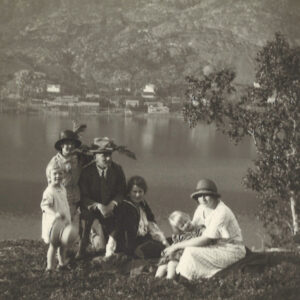
Sulitjelma summer picnic
Although they lived frugally the Lunds prioritized family events and summer holidays – often with their friends in Värmland or visiting family and friends in Sulitjelma. The Lunds took the long trip to Sulis to spend summers with family whenever they could. This involved a trainride to Trondheim to visit Aagot’s sister Thelma, her brother-in-law Tinka Tangen and their 3 daughters. After a few days in Trondheim they took Hurtigruten, the ferry that still connects the western coastal ports of Norway from Bergen up to Kirkenes. They got off in Bodö where they travelled by horse & cart or later by car to Sulitjelma. The car ride from Bodö to Finneid took 3 hours through the mountains followed by boat to Schönsta, by the little local railway past Furulund and on to Sulitjelma. There are now three long tunnels through the mountains – one that takes 45 minutes to drive through though these were built much later after the wars.
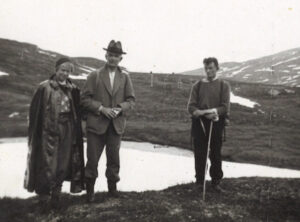 The family spent the summer of 1930 in Norway and Kjell, Signe and Anne-Karine started it with a 3-day trip taking them from Mo-i-Rana to Sulitjelma over Norway’s massive glacier – Svartisen. Signe was 15 and Nussa was 14 and this was an exciting challenge! The plan was for Signe and Nussa to set out from Mo-i-Rana by bike and meet Kjell and a guide at a given spot.
The family spent the summer of 1930 in Norway and Kjell, Signe and Anne-Karine started it with a 3-day trip taking them from Mo-i-Rana to Sulitjelma over Norway’s massive glacier – Svartisen. Signe was 15 and Nussa was 14 and this was an exciting challenge! The plan was for Signe and Nussa to set out from Mo-i-Rana by bike and meet Kjell and a guide at a given spot.
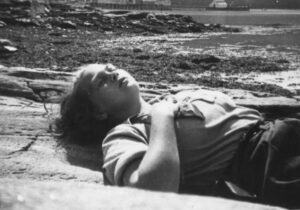
Signe
They were so proud when they met up with Kjell at the right time and place! From there they walked over Svartisen together with the guide and made their way up to Sulitjelma. There were of course no mobile phones or even landlines – nor were there any stopping places on the way in case of emergency or delays!
There are lots of mosquitos up north in the summertime and Signe remembered how you sometimes could see small dark clouds with feet approaching as the mosquitos swarmed around a person – unless you were walking on the ice.
The family spoke Norwegian at home but they spoke perfect Swedish outside the home. During the difficult years of the depression the company shares had dropped in value and were bought up by French shareholders who then held the majority of the shares in Sulitjelma Gruber Aktieselskap. Kjell now had to learn French in order to conduct business abroad but there were no crash language courses in those days. Ever resourceful, he engaged a French lady to come and have dinner with the family and speak French so he could learn the sounds and common phrases. Kjell would then get Signe to go for walks and help him practice the lessons that he had been assigned for the next appointment. Signe had just started to learn French in school and she would ask him questions in Norwegian so he could respond in French. The whole family were great linguists and where Kjell had previously conducted company business in Germany he was soon able to conduct business in France too.
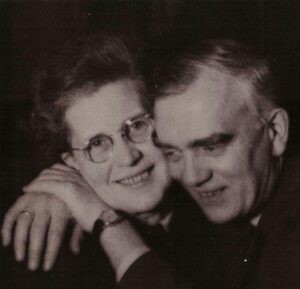
Kjell and Aagot – Mormor and Morfar Lund
On his business trips to France Kjell would try to buy something nice for Aagot to have at home or to wear. He was known to go to a store and look for something pretty that he thought she would like. Sometimes he would find a salesperson who looked about the same size as Aagot and have her model the dress. Other times he would take the dress and hold it up at the neck so that he could look down into it. Sweeping his eyes around the inside of the dress he assessed the size to see if it would fit – and it did! My grandmother Aagot’s creativity in the home and the way she entertained rubbed off on all her girls who also became gifted at making the little they had go a long way. This gift of home-making on a shoestring was passed on to their daughters! With little money they learnt to create special things out of whatever they had.




